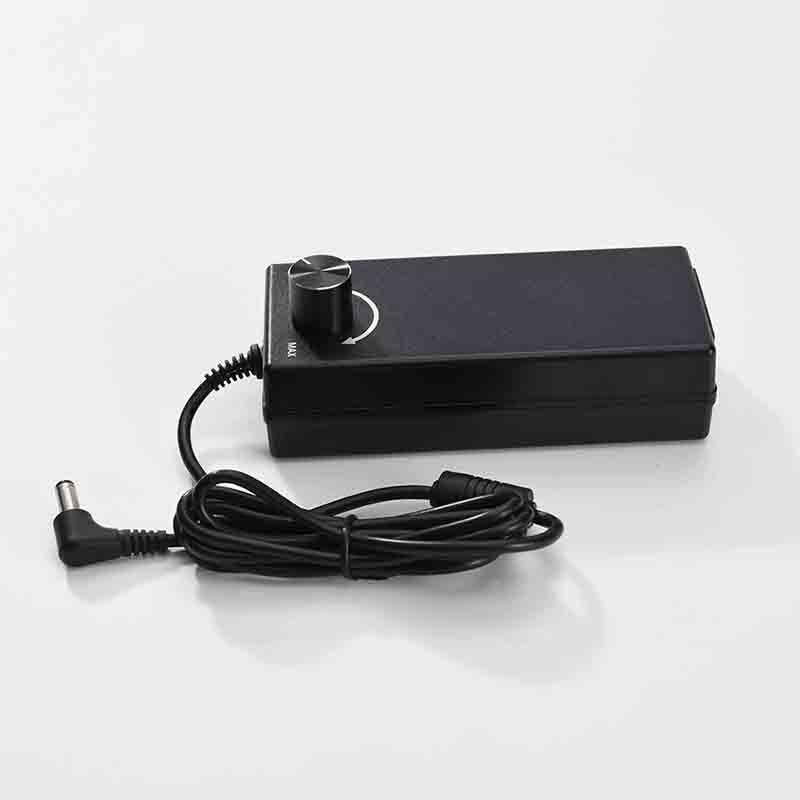Comprehensive Analysis of Adjustable Voltage Adapters
Adjustable voltage adapters represent a significant advancement in power supply technology, offering unparalleled flexibility and precision in voltage regulation. These sophisticated devices have revolutionized how electronic equipment receives power, providing engineers, technicians, and electronics enthusiasts with precise control over voltage parameters.

Technical Advantages and Specifications
Voltage Flexibility
Modern adjustable voltage adapters typically offer output ranges from 3V to 24V DC with voltage resolution as fine as 0.01V. High-end laboratory models can achieve ranges from 0-60V with precision down to 1mV.
Current Regulation
Advanced current limiting capabilities range from 0-10A, with precision current regulation maintaining stability within ±1% of set value. Over-current protection typically triggers within 100ms of detection.
Efficiency Performance
High-quality switching designs achieve efficiency ratings of 85-92% across the operating range. Power factor correction (PFC) circuits maintain power factors above 0.95 at full load.
Stability Metrics
Line regulation typically maintains ±0.5% or better for input variations of 90-264V AC. Load regulation keeps output within ±1% for load changes from 0-100%.
Advanced adjustable voltage adapters incorporate digital interfaces with 16-bit DAC and ADC converters, providing exceptional resolution and accuracy. Thermal management systems maintain operating temperatures between -20°C to +70°C with derating above 40°C.
Application Scenarios
Electronics Research and Development
Used for prototyping circuits with varying voltage requirements, testing component behavior under different power conditions, and validating design specifications across multiple voltage domains.
Industrial Automation
Powering programmable logic controllers (PLCs), sensors, and actuators that require specific voltage levels. Used in manufacturing environments where equipment from different regions with varying voltage standards must be accommodated.
Telecommunications Infrastructure
Providing stable power to network equipment, routers, and switches that may operate at different voltage levels. Essential for maintaining uptime in data centers and communication hubs.
Educational Laboratories
Enabling students to experiment with electronic principles, observe voltage-current relationships, and understand power supply characteristics in controlled academic environments.
Consumer Electronics Repair
Diagnosing and testing devices that require specific voltage inputs. Technicians can simulate various power conditions to identify faults and verify repairs without risking damage to sensitive components.
LED Lighting Systems
Powering LED arrays and strips that require precise voltage control for optimal brightness and color consistency. Used in both commercial lighting installations and architectural lighting designs.
Maintenance Protocols and Best Practices
Regular Maintenance Procedures
Visual Inspection: Conduct monthly visual examinations for physical damage, cable wear, or connector corrosion. Check for bulging capacitors or discolored components indicating potential failure.
Performance Verification: Quarterly calibration checks using certified multimeters to verify output accuracy. Measure voltage and current at multiple set points across the operating range to ensure consistency within manufacturer specifications.
Thermal Management: Ensure adequate ventilation and clean air vents regularly. Monitor operating temperatures during extended use periods. Thermal imaging can identify hot spots indicating component stress.
Electrical Safety Testing: Perform annual insulation resistance tests with megohmmeters applying 500V DC between input and output. Verify ground continuity with resistance measurements below 0.1Ω.
Cleaning Procedures: Use isopropyl alcohol and lint-free cloths for cleaning connectors and exterior surfaces. Compressed air (≤30 PSI) can remove dust from ventilation ports. Avoid chemical cleaners that may damage plastic components or labels.
Storage Recommendations: Store in controlled environments with temperatures between 15-25°C and humidity below 60% RH. Protect from direct sunlight and extreme temperature fluctuations. For extended storage, package in anti-static bags with desiccant packs.
Operational Longevity: To maximize service life, avoid operating at maximum rated capacity for extended periods. Derate power output by 20% for continuous operation. Implement proper cooling when operating above 50% of maximum rated current.
Troubleshooting Common Issues
Voltage Fluctuation Issues:
1. Check input power stability (should be within 90-264V AC)
2. Verify load conditions are within specifications
3. Inspect output cables and connectors for damage
4. Test with known good load to isolate adapter issues
Over-temperature Protection Activation:
1. Ensure adequate ventilation around unit
2. Clean ventilation ports and heat sinks
3. Reduce output current or provide external cooling
4. Check ambient temperature is within operating range
Adjustable voltage adapters represent the convergence of precision engineering and practical utility in power management. Their technical sophistication enables applications across diverse fields while their robust design ensures reliable performance when properly maintained. The continued evolution of these devices promises even greater precision, efficiency, and integration capabilities for future electronic systems.








